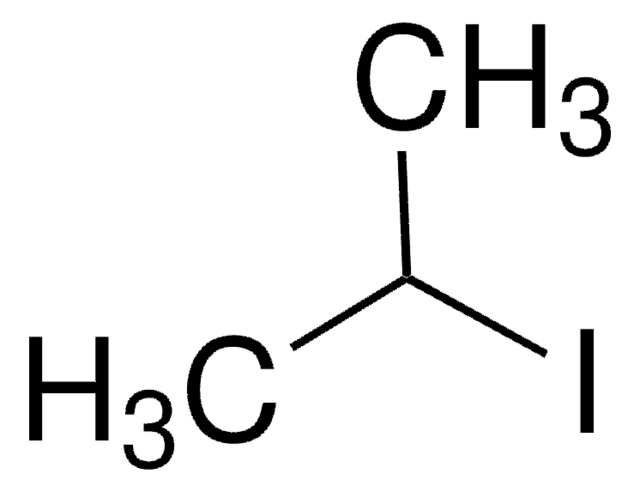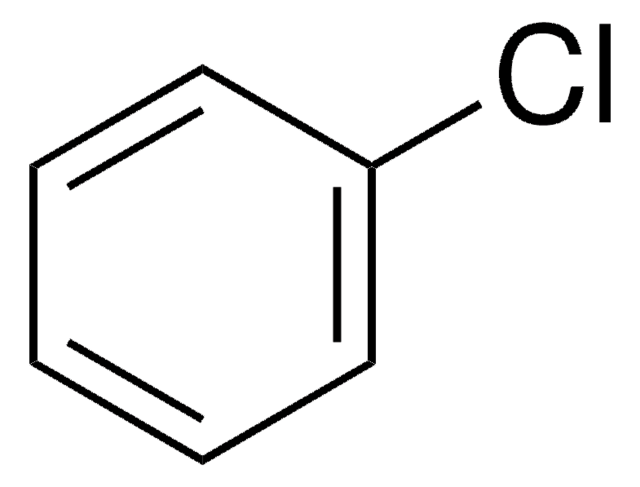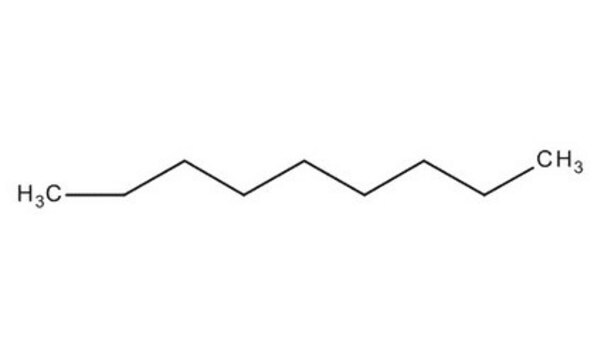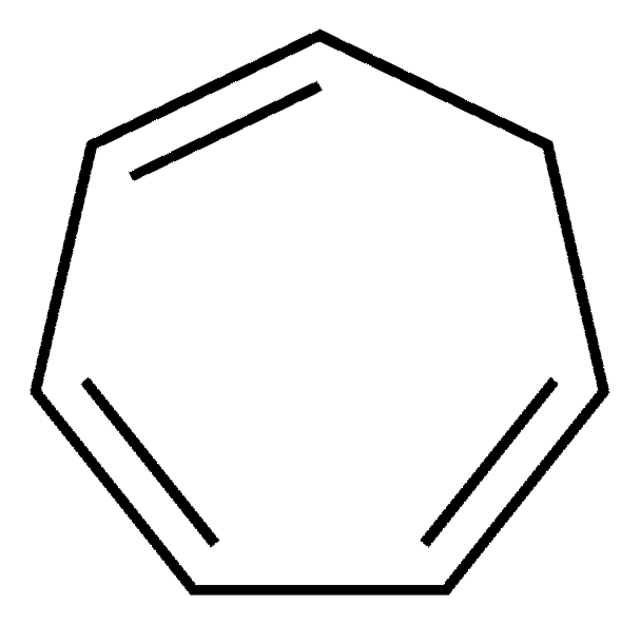296988
Octane
anhydrous, ≥99%
Sinonimo/i:
n-Octane
About This Item
Prodotti consigliati
Grado
anhydrous
Livello qualitativo
Densità del vapore
3.9 (vs air)
Tensione di vapore
11 mmHg ( 20 °C)
Saggio
≥99%
Stato
liquid
Temp. autoaccensione
428 °F
Limite di esplosione
6.5 %
Impurezze
<0.002% water
<0.005% water (100 mL pkg)
Residuo dopo evaporazione
<0.0003%
Indice di rifrazione
n20/D 1.398 (lit.)
P. ebollizione
125-127 °C (lit.)
Punto di fusione
−57 °C (lit.)
Solubilità
ethanol: soluble(lit.)
Densità
0.703 g/mL at 25 °C (lit.)
Stringa SMILE
CCCCCCCC
InChI
1S/C8H18/c1-3-5-7-8-6-4-2/h3-8H2,1-2H3
TVMXDCGIABBOFY-UHFFFAOYSA-N
Cerchi prodotti simili? Visita Guida al confronto tra prodotti
Descrizione generale
Applicazioni
- A photonic crystal material for the online detection of nonpolar hydrocarbon vapors.: Research on a novel photonic crystal material aimed at the efficient detection of nonpolar hydrocarbons such as octane, enhancing safety and monitoring in chemical processing environments (Bolshakov et al., 2022).
Confezionamento
Altre note
Note legali
Avvertenze
Danger
Indicazioni di pericolo
Consigli di prudenza
Classi di pericolo
Aquatic Acute 1 - Aquatic Chronic 1 - Asp. Tox. 1 - Flam. Liq. 2 - Skin Irrit. 2 - STOT SE 3
Organi bersaglio
Central nervous system
Codice della classe di stoccaggio
3 - Flammable liquids
Classe di pericolosità dell'acqua (WGK)
WGK 2
Punto d’infiammabilità (°F)
55.4 °F - closed cup
Punto d’infiammabilità (°C)
13 °C - closed cup
Dispositivi di protezione individuale
Eyeshields, Faceshields, Gloves, type ABEK (EN14387) respirator filter
Scegli una delle versioni più recenti:
Possiedi già questo prodotto?
I documenti relativi ai prodotti acquistati recentemente sono disponibili nell’Archivio dei documenti.
I clienti hanno visto anche
Protocolli
Separation of Hexane; Heptane; Octane; Nonane; Decane; Undecane; Dodecane; Tetradecane; Hexadecane; Octadecane; Eicosane; Tetracosane; Octacosane; Dotriacontane; Hexatriacontane; Tetracontane; Tetratetracontane
-1,3-Dimethylcyclopentane; 1,1-Dimethylcyclopentane; 2,2,3-Trimethylpentane; 2,2-Dimethylbutane; 2,2-Dimethylhexane; 2,2-Dimethylpentane; 2,3-Dimethylbutane; 2,3-Dimethylhexane; 2,4-Dimethylheptane; 2,4-Dimethylpentane; 2,5-Dimethylheptane; 2-Methylhexane; 2-Methylpentane; 3,3-Dimethylpentane; 3,4-Dimethylhexane; 3-Ethylpentane; 3-Methyloctane; 4-Methylheptane; Ethylbenzene; Ethylcyclopentane; 2,6-Dimethylheptane; 3-Ethylheptane
-Xylene; Nonane; Propylbenzene; Mesitylene; 1,2,4-Trimethylbenzene; 1,2,3-Trimethylbenzene; 1,3-Diethylbenzene; 1,4-Dimethyl-2-ethylbenzene; 1,2-Dimethyl-4-ethylbenzene; Durene; 1,2,3,5-Tetramethylbenzene; 1,2,3,5-Tetramethylbenzene; 2-Methylnaphthalene (β)
Il team dei nostri ricercatori vanta grande esperienza in tutte le aree della ricerca quali Life Science, scienza dei materiali, sintesi chimica, cromatografia, discipline analitiche, ecc..
Contatta l'Assistenza Tecnica.














